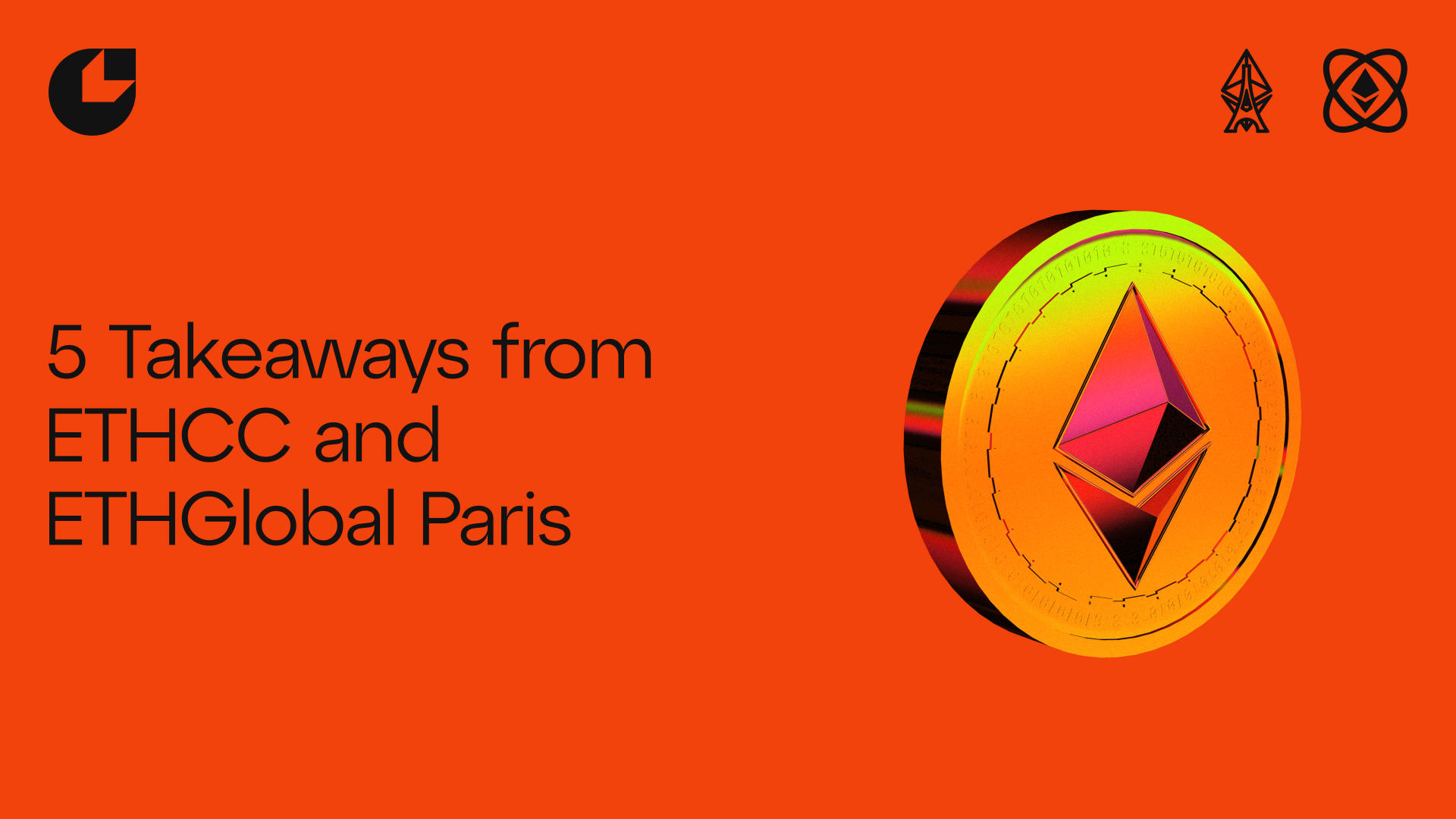In the heart of Paris, from July 17 to July 23, the pulse of innovation beat stronger than ever as the city played host to the Ethereum Community Conference (ETHCC) and ETHGlobal Paris, two events that brought together builders from around the world driven by optimism and enthusiasm about the future of Ethereum and web3.
Our team was there in full force: sharing insights in keynote presentations and panels, forging connections at side events, and soaking up all the conferences and city had to offer. From our buzzing booths to engaging sessions, we were right at the centre, bridging the gap between present tech and future aspirations.
Now that the week has wrapped up, it's time to look back and distil what we've learned. With so many brilliant minds in one place, the learnings were vast and the takeaways significant so we've narrowed it down to the 5 most critical points about the future of web3 as gleaned from ETHCC and ETHGlobal Paris.
1. Layer 2s continue to scale Ethereum as critical infrastructure
This takeaway aligns with the Ethereum Foundation's long-standing belief that Layer 2 (L2) solutions hold the key to Ethereum's future scaling. The announcement by the Consensys-created zk-EVM network, Linea at ETHCC about the public release of the Linea mainnet has further reinforced this takeaway.
Since the release of the Linea mainnet alpha, we've witnessed over $23 million bridged and 774,000 transactions recorded, showcasing the significant impact of the community's support and the power L2s have to support Ethereum’s growth.
Furthermore, notable projects like Coinbase and Mantle network are making innovative strides in the Layer 2 space, as they both announced plans to decentralize and launch their public mainnet respectively. These developments are welcomed additions to the ecosystem and evoke great anticipation for what the future holds for Ethereum’s growth. The continuous development of L2 solutions indicates a bright outlook for Ethereum's scalability and overall network efficiency.
2. Social media in web3 are maturing and gaining traction
It’s evident that decentralized social networks are essential in today's world, given concerns about user censorship, lack of ownership, and privacy on web2. With the recent release of the Thread app by Meta, users are becoming more concerned about the potential risks associated with a single entity owning and controlling the entire social footprint.
Over the past few years, we have observed progress in web3 social networks. However, the recent announcement of Lens V2 at ETHCC has heightened our optimism about the prospect of an open and decentralized social layer for the web. Lens, boasting a total user count of 109,381 as of April 2023, now incorporates new features like open actions, enabling users and developers to introduce their smart contracts for external smart contract actions on any Lens publication.
Additionally, Lens V2 supports cross-chain functionality and a new profile manager system that adheres to the ERC-6551 token standard. These advancements signify a positive trajectory towards a more decentralized and user-centric social web.
3. Account Abstraction will onboard a critical mass through improved user experience
Vitalik's talk at ETHCC, entitled The History of Account Abstraction, solidified the fact that account abstraction will drive the next wave of mass user adoption for Ethereum. Account abstraction refers to using special smart contracts called "account contracts" to manage Ethereum accounts, now known as "smart accounts." This will enable users to create non-custodial wallets as programmable smart contracts.
Builders in the ecosystem are already developing wallets that support account abstraction, along with Layer 2 solutions that also facilitate this feature. This progress signifies a significant step towards making Ethereum more accessible and user-friendly, paving the way for wider adoption in the future.
4. A shift in focus from infrastructure to application development is overdue
If you were present at ETHCC, you may have sensed the sentiment too. This is an important topic that many builders in the ecosystem are sensitive about, but it must be addressed. Currently, there seems to be a trend of building slightly different infrastructure protocols, while few are actually focusing on developing dapps to run on this infrastructure.
As an ecosystem, it is crucial for more people to concentrate on building and deploying real dapps with practical use cases for users, rather than creating replicated versions of existing functional infrastructure. The shift from infrastructure to application development will enable builders to successfully onboard the next billion users into web3.
5. Interoperability is crucial and protocols must support each other with compatibility
To build on the last point, it is necessary for protocols and teams to incorporate interoperability into their infrastructures as it is essential for the ecosystem to grow through practical functionality With the existence of numerous protocols today, one can only imagine how much faster the ecosystem can progress if these protocols can communicate easily and reliably with each other. As it was pointed out in takeaway one, many L2s have launched this year to scale Ethereum without interoperability being addressed and the same goes for point five: too much infrastructure, not enough application layer interoperability.
This is why we are excited about the Chainlink Cross-Chain Interoperability Protocol (CCIP) mainnet launch at ETHCC. The CCIP protocol is designed to facilitate seamless communication between different blockchain networks, initially supporting Ethereum, Optimism, Polygon, and Avalanche. It is already being adopted by other DeFi projects like Aave and Synthetix, further enhancing the ecosystem's interoperability capabilities.
The future is bright for Ethereum
If I were to leave you with one key takeaway, it would be that the future of Ethereum and web3 looks exceptionally promising and bright. The recent events at ETHCC and ETHGlobal Paris have highlighted several significant areas of growth, including the continued scaling of Ethereum through Layer 2 solutions.
The maturation and traction of decentralized social networks, exemplified by the Lens V2 announcement, also indicate progress towards an open and decentralized social layer for the web, among other noteworthy developments.
